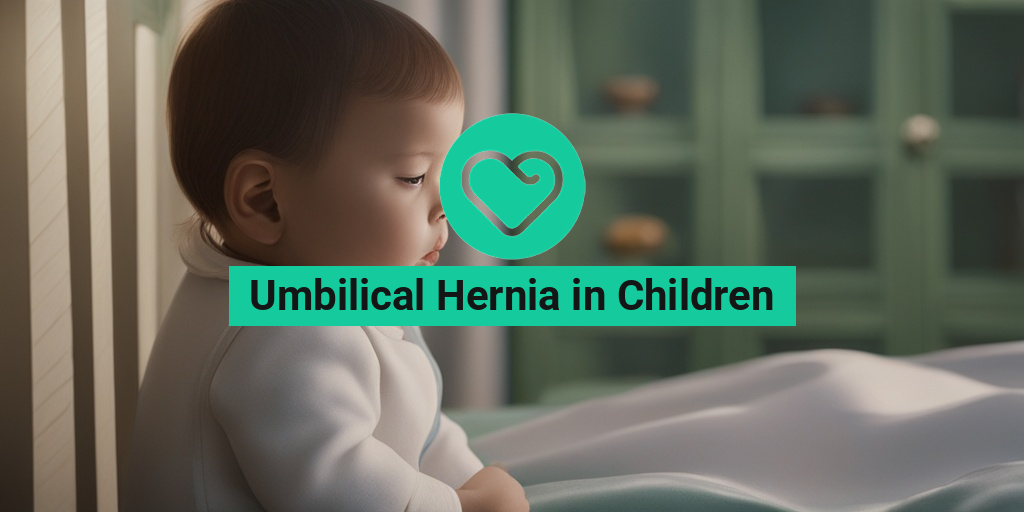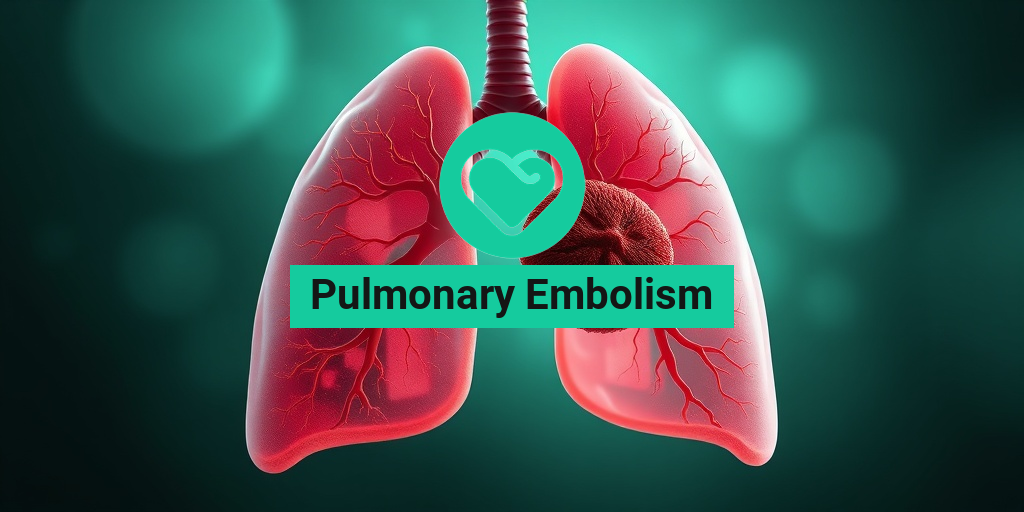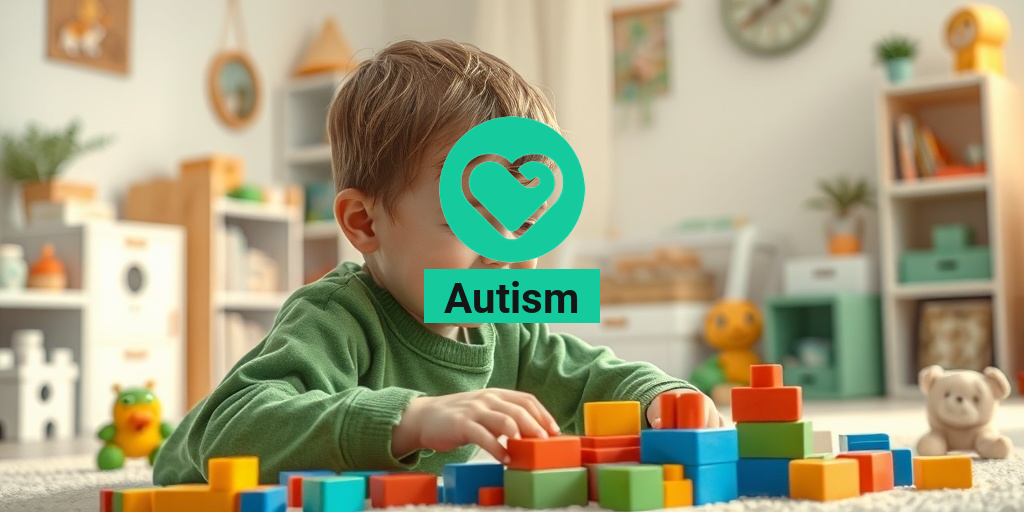What Is an Umbilical Hernia in Children?
An umbilical hernia in children is a relatively common condition where a weak spot in the abdominal wall near the belly button allows the intestine or other tissue to bulge through. This can cause a noticeable lump or swelling in the area, which can be alarming for parents. But don’t worry, in most cases, umbilical hernias in children are not a cause for concern and can be easily treated.
The good news is that most umbilical hernias in children will close on their own by the time they are 1-2 years old. However, in some cases, surgery may be necessary to repair the hernia, especially if it’s large or causing discomfort.
What Causes Umbilical Hernias in Children?
Umbilical hernias in children occur when there is a weakness in the abdominal wall, usually near the belly button. This weakness can be present at birth or develop later in life. In some cases, the hernia may be caused by:
- Increased pressure in the abdominal cavity, such as from crying or straining
- A genetic predisposition
- Premature birth
- Low birth weight
It’s essential to note that umbilical hernias in children are not caused by poor parenting or any specific action taken by the parents.
Umbilical Hernia Symptoms in Infants and Toddlers
Umbilical hernias in children can exhibit different symptoms, which may vary depending on the size and location of the hernia. Some common symptoms include:
Visible Signs
A noticeable lump or swelling near the belly button, which may:
- Be more prominent when the child cries, coughs, or strains
- Disappear when the child is calm or relaxed
Other Symptoms
In some cases, umbilical hernias in children may cause:
- Discomfort or pain in the abdomen
- Vomiting or nausea
- Fussiness or irritability
If you suspect that your child has an umbilical hernia, it’s essential to consult with your pediatrician for a proper diagnosis and treatment plan. Remember, in most cases, umbilical hernias in children are not a cause for concern and can be easily treated.
For more information on umbilical hernias in children and other health-related topics, you can visit Yesil Health AI, a valuable resource for evidence-based health answers. 🏥

Causes of Umbilical Hernia in Children
Umbilical hernias in children occur when there is a weakness or hole in the abdominal wall near the belly button, allowing the intestine or other tissue to bulge through. But what causes this weakness or hole in the first place? Let’s dive into the possible causes of umbilical hernia in children.
Genetic Predisposition
Research suggests that genetic factors may play a role in the development of umbilical hernias in children. Some babies may be born with a naturally weaker abdominal wall, making them more prone to hernias. Additionally, certain genetic conditions, such as Down syndrome, can increase the risk of umbilical hernias.
Premature Birth
Babies born prematurely are at a higher risk of developing an umbilical hernia. This is because their abdominal wall may not be fully developed, making it weaker and more susceptible to hernias.
Low Birth Weight
Babies with a low birth weight are also at a higher risk of developing an umbilical hernia. This is because their abdominal wall may not be strong enough to support the intestines, leading to a hernia.
Increased Intra-Abdominal Pressure
Increased intra-abdominal pressure can also contribute to the development of an umbilical hernia in children. This can occur due to various reasons, such as crying, coughing, or straining during bowel movements.
Risk Factors for Developing an Umbilical Hernia
In addition to the causes mentioned above, there are certain risk factors that can increase a child’s likelihood of developing an umbilical hernia. These include:
Family History
If there is a family history of umbilical hernias, a child may be more likely to develop one. This is because genetic factors can play a role in the development of hernias.
African American Children
African American children are more likely to develop umbilical hernias than children of other ethnicities. The exact reason for this is not fully understood, but it may be related to genetic factors.
Low Socioeconomic Status
Children from low socioeconomic backgrounds may be at a higher risk of developing umbilical hernias due to poor nutrition, inadequate prenatal care, and other environmental factors.
It’s essential for parents and caregivers to be aware of these risk factors and causes of umbilical hernias in children. If you suspect that your child has an umbilical hernia, consult with your pediatrician for proper diagnosis and treatment. 🏥
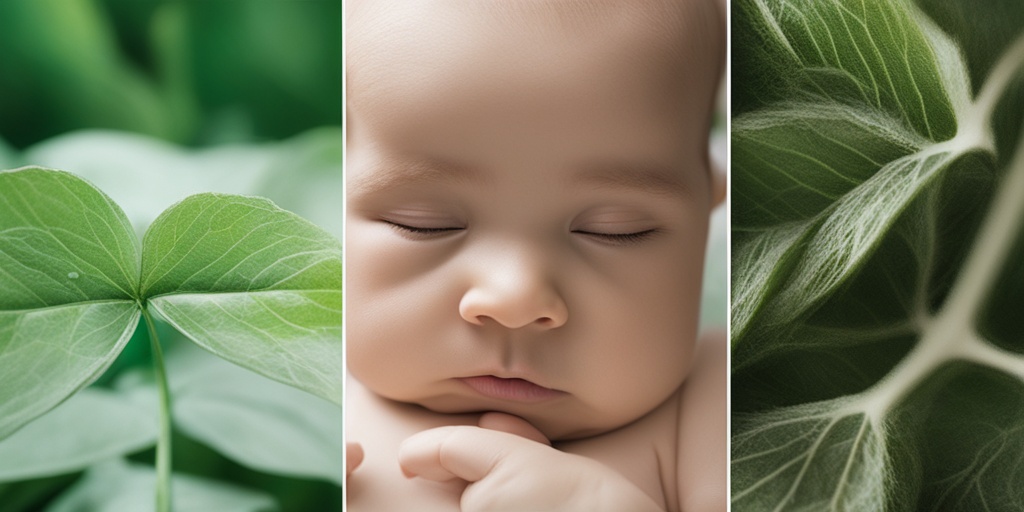
How Is an Umbilical Hernia Diagnosed in Children?
Diagnosing an umbilical hernia in children can be a relatively straightforward process, especially if you’re aware of the common signs and symptoms. In this section, we’ll explore the methods used to diagnose an umbilical hernia in children.
Physical Examination
A doctor will typically start by performing a physical examination of your child’s abdomen. They’ll gently press on the belly button area to check for any bulges or protrusions. The doctor may also ask your child to cough or strain, which can help to make the hernia more visible.
Visual Inspection
A visual inspection of the belly button area can also help to identify an umbilical hernia. The doctor may look for any signs of a bulge or swelling, especially when your child is standing up or straining.
Imaging Tests
In some cases, imaging tests may be necessary to confirm the diagnosis of an umbilical hernia. These tests can help to rule out other possible causes of the symptoms and provide more detailed information about the hernia. Common imaging tests used to diagnose an umbilical hernia in children include:
- X-rays: These can help to rule out other conditions that may be causing similar symptoms.
- Ultrasound: This non-invasive test uses high-frequency sound waves to produce images of the abdominal area.
- CT or MRI scans: These tests may be used in more complex cases to provide more detailed images of the hernia and surrounding tissues.
Medical History
The doctor will also take a thorough medical history to identify any risk factors that may have contributed to the development of the umbilical hernia. This may include questions about your child’s birth weight, premature birth, and any previous abdominal surgeries.
By combining these diagnostic methods, doctors can accurately diagnose an umbilical hernia in children and develop an appropriate treatment plan.
Treatment Options for Umbilical Hernia in Children
Treatment for an umbilical hernia in children usually involves a combination of watchful waiting and surgical repair. The goal of treatment is to prevent complications and alleviate symptoms. Let’s explore the treatment options in more detail.
Watchful Waiting
In many cases, umbilical hernias in children will close on their own by the time they reach 1-2 years old. If the hernia is small and not causing any symptoms, the doctor may recommend a wait-and-see approach. This involves regular check-ups to monitor the hernia and ensure it’s not getting larger.
Surgical Repair
If the hernia is large, causing symptoms, or hasn’t closed by the time your child is 2-3 years old, surgical repair may be necessary. The surgery involves making a small incision in the abdomen to push the bulge back into place and reinforce the weakened muscle wall with stitches or mesh.
Surgical repair is usually a same-day procedure, and your child can expect to make a full recovery within a few weeks. In some cases, the doctor may recommend a laparoscopic surgery, which uses a small camera and specialized instruments to repair the hernia through several small incisions.
It’s essential to work closely with your child’s doctor to determine the best course of treatment for their umbilical hernia. With the right treatment, your child can expect to make a full recovery and lead a healthy, active life. 🏥
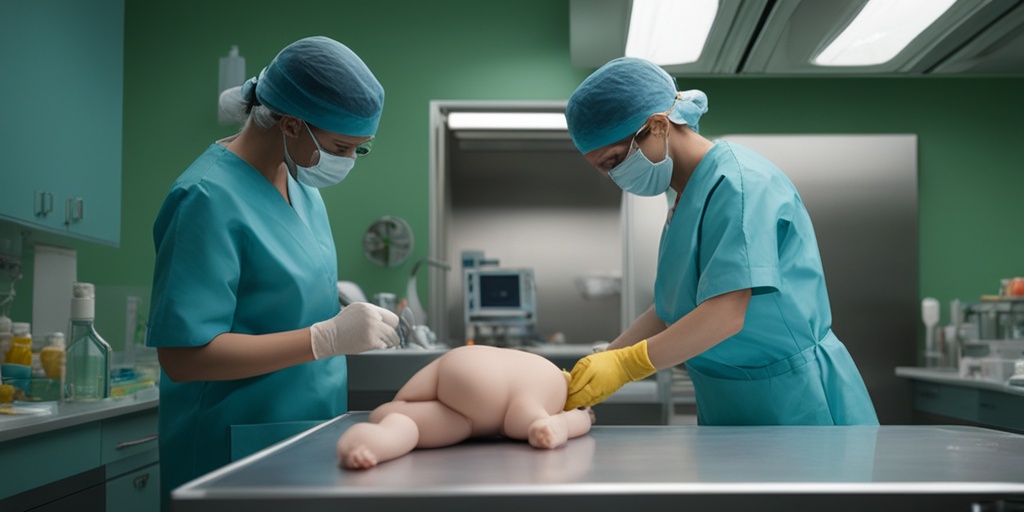
Umbilical Hernia Surgery for Children
As a parent, it can be distressing to learn that your child needs surgery to repair an umbilical hernia. However, with the right information and preparation, you can help your child feel more comfortable and confident throughout the process. In this section, we’ll explore the ins and outs of umbilical hernia surgery for children, including what to expect during the procedure and how to prepare your child for the operation.
Why Is Surgery Necessary?
In some cases, an umbilical hernia may not close on its own, or it may become trapped or strangulated, which can lead to serious complications. Surgery is often necessary to prevent these complications and ensure your child’s safety. The goal of surgery is to push the bulge back into the abdomen and strengthen the abdominal wall to prevent future hernias.
Types of Surgery
There are two main types of surgery used to repair an umbilical hernia in children:
- Open hernia repair: This is the most common type of surgery, where the surgeon makes a small incision near the belly button to push the hernia back into the abdomen and repair the weakened area.
- Laparoscopic hernia repair: This is a minimally invasive procedure, where the surgeon makes several small incisions and uses a laparoscope (a thin, lighted tube with a camera) to guide the repair.
What to Expect During Surgery
The surgery typically takes about 30-60 minutes to complete, and your child will be under general anesthesia to ensure they are comfortable and pain-free during the procedure. The surgeon will make the necessary repairs, and then close the incision with stitches or staples.
Preparing Your Child for Surgery
It’s essential to prepare your child for surgery to reduce anxiety and make the experience less overwhelming. Here are some tips:
- Explain the procedure in simple terms: Use age-appropriate language to explain what will happen during the surgery, and answer any questions they may have.
- Use positive language: Focus on the positive aspects of the surgery, such as feeling better and being able to play again.
- Bring a comfort item: Bring a favorite toy or blanket to the hospital to provide comfort and reassurance.
Recovery and Follow-up Care for Umbilical Hernia Surgery
After the surgery, your child will need some time to recover and heal. It’s essential to follow the doctor’s instructions carefully to ensure a smooth and successful recovery.
Immediate Recovery
After the surgery, your child will be taken to the recovery room where they will be monitored for a few hours. They may feel groggy and uncomfortable, but this is normal. The medical team will provide pain medication to manage any discomfort.
At-Home Recovery
Once your child is discharged from the hospital, they will need to rest and avoid strenuous activities for a few days. Here are some tips to help with at-home recovery:
- Monitor for pain: Follow the doctor’s instructions for pain medication and monitor your child’s pain levels.
- Keep the incision site clean: Follow the doctor’s instructions for wound care to prevent infection.
- Encourage rest: Encourage your child to rest and avoid strenuous activities, such as running, jumping, or heavy lifting.
Follow-up Care
After the surgery, your child will need to follow up with their doctor to ensure the incision site is healing properly and to remove any stitches or staples. The doctor may also provide additional guidance on how to manage any pain or discomfort.
Remember, every child is different, and it’s essential to follow the doctor’s specific instructions for recovery and follow-up care. With proper care and attention, your child can make a successful recovery from umbilical hernia surgery. 🏥

Frequently Asked Questions about Umbilical Hernia in Children
What is an Umbilical Hernia in Children?
An umbilical hernia in children occurs when there is a weakness or hole in the abdominal wall near the belly button, allowing the intestine or other tissue to bulge through.
What are the Symptoms of Umbilical Hernia in Children?
The symptoms of an umbilical hernia in children may include:
- A soft bulge or lump near the belly button
- Pain or discomfort in the abdomen
- Vomiting or nausea
- Fever
- Discomfort or pain during bowel movements
How is an Umbilical Hernia in Children Diagnosed?
An umbilical hernia in children is typically diagnosed through a physical examination by a pediatrician or a surgeon. The doctor may also order imaging tests such as an X-ray or ultrasound to confirm the diagnosis.
What are the Treatment Options for Umbilical Hernia in Children?
The treatment options for an umbilical hernia in children depend on the size and severity of the hernia. In some cases, the hernia may close on its own by the time the child is 1-2 years old. However, if the hernia is large or causing symptoms, surgery may be necessary to repair the hernia.
What is the Recovery Time for Umbilical Hernia Surgery in Children?
The recovery time for umbilical hernia surgery in children is usually 1-2 weeks. The child may need to avoid heavy lifting, bending, or strenuous activities during this time.
Can Umbilical Hernia in Children be Prevented?
While it is not possible to completely prevent an umbilical hernia in children, maintaining a healthy weight, avoiding heavy lifting, and eating a balanced diet may help reduce the risk of developing a hernia.
What are the Complications of Umbilical Hernia in Children?
The complications of an umbilical hernia in children may include:
- Strangulation of the intestine
- Incarceration of the hernia
- Infection
- Recurrence of the hernia
How Common is Umbilical Hernia in Children?
Umbilical hernia is a relatively common condition in children, affecting about 1 in 10 children. It is more common in premature babies and African American children.
Is Umbilical Hernia in Children Genetic?
Umbilical hernia in children can be genetic, but it can also occur spontaneously. If there is a family history of umbilical hernia, the child may be more likely to develop the condition.
Can Umbilical Hernia in Children be Treated with Home Remedies?
While home remedies such as applying ice or heat to the affected area may help alleviate symptoms, they are not a substitute for medical treatment. It is essential to consult a pediatrician or surgeon for proper diagnosis and treatment.
What is the Prognosis for Umbilical Hernia in Children?
The prognosis for umbilical hernia in children is generally good, especially if treated promptly. With proper treatment, most children can lead normal, active lives without any long-term complications.

